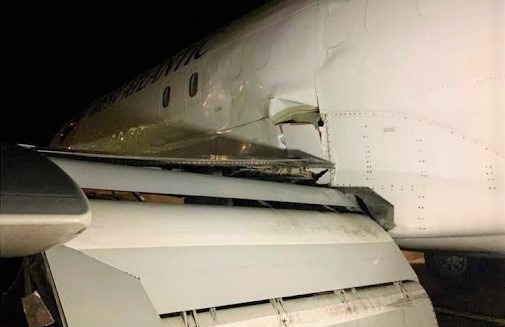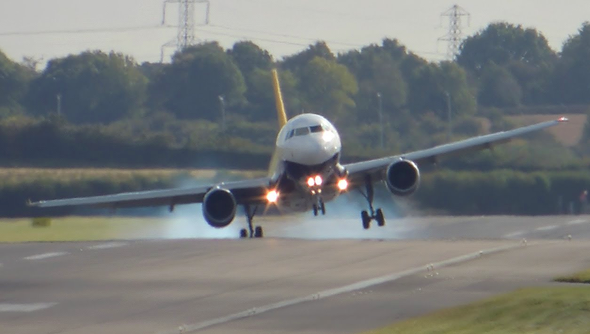


Maintaining the airworthiness of an aircraft is prime during and after the Flight and much of it depends on how the aircraft behaved during the Flight.
Aicrafts can undergo situations or events, where the Operational thresholds or limits that define the envelope for the load conditions in normal operations can be breached, these conditions are otherwise called High Load Event.

High Load Event Definition and effects :
A high load event is a kind of event that exceeds the range of the load conditions an aircraft will experience in normal operations.
Though, the aircraft is designed to withstand a certain level of excessive loads in abnormal conditions for safe flying, this excessive loading can have an adverse effect on the aircraft’s structure, engines, engine mounts, pylons, components and its systems.
Where can a High Load Event occur ?
High load events of aircrafts can occur either in flight or on the ground.
► High load event Inflight - A flight load exceedance may occur if the aircraft encounters crosswind conditions and severe turbulence , or breach of its operational speed limits.
The overspeed condition also includes events where the aircraft’s airspeed was above the allowable limits for extending or operating flaps, slats or the landing gear.
► High load event on the ground - Though, the high load event on the ground is generally a hard landing or hard overweight landing, it can also be caused by abnormal lateral loading when landing or taxing under extreme crosswinds.

What are the types of High load events ?
We can classify the High Load events in to two categories, First category involves aircraft speed exceedance and second one will be related to rapid vertical or lateral accelerations of the aircraft.
| S/N | TERMINOLOGY | DESCRIPTION |
| 1 | VMO / MMO | Exceeds the maximum operating speed/Mach of the aircraft. |
| 2 | VLE / MLE | Exceeds the maximum speed/Mach at which the aircraft can fly with the landing gear extended. |
| 3 | VLO / MLO | Exceeds the maximum speed/Mach to operate (both extend and retract) the landing gear. |
| 4 | VFE | Exceeds the maximum speed the aircraft can fly with the Slats/Flaps extended. ( Each Flap/ slat configuration has respective speed limits). |
| S/N | TERMINOLOGY | DESCRIPTION |
| 1 | Hard Landing |
A hard landing occurs when an aircraft hits the ground with a greater vertical speed and force than in a normal landing, happens during an unstable approach or sudden lateral accelerations at the touchdown caused by severe crosswind gusts. |
| 2 | Overweight Landing |
An Overweight landing is defined as a landing made at a gross weight in excess of the maximum design landing weight for a particular aircraft type. A pilot may consider making an overweight landing when a situation arises that requires the airplane to return to the takeoff airport or divert to another airport soon after takeoff. |
| 3 | Vertical Turbulence | The conditions that can cause high vertical loads inflight include heavy turbulence in flight or large movements in yaw and roll, system failures such as rudder trim run-away. |
| 4 | Lateral Turbulence | The conditions that can cause high lateral loads inflight include heavy turbulence in flight or large movements in yaw and roll, system failures such as rudder trim run-away. |

How important is a pilot report (PIREP) during these conditions ?
Experience counts : with airworthiness in mind, the meticulous reporting of high load events relies on the pilot’s awareness and experience, which is the first step to investigate further. pilots should take the responsibility to report high load events by making the logbook entry . The PIREP will prompt an evaluation of the load event on the ground by maintenance team to determine further course of actions or maintenance dispositions.
Fit to Fly and turn around time : A timely pilot report of any high load event initiates efficient evaluation that allows the aircraft to more rapidly return to operations when the required maintenance tasks are complete. This process also reassure the pilot that the aircraft remains in a fit to fly condition.
